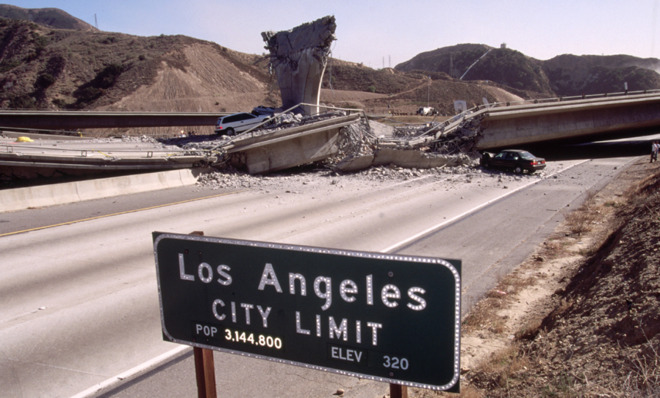My first (real) earthquake


This wasn't "the Big One" by anyone's reckoning. But for the first five seconds or so, this morning's jolting felt very familiar to Angelenos who lived through the magnitude 6.4 earthquake in 1994.
I wasn't one of them.
That's because this was my first real quake since moving to Los Angeles.
The Week
Escape your echo chamber. Get the facts behind the news, plus analysis from multiple perspectives.

Sign up for The Week's Free Newsletters
From our morning news briefing to a weekly Good News Newsletter, get the best of The Week delivered directly to your inbox.
From our morning news briefing to a weekly Good News Newsletter, get the best of The Week delivered directly to your inbox.
As they say on the TV news, it "rattled nerves."
My first thought was for my husband, who was downstairs.
Then I thought: "Earthquake."
Then my police scanner fell off my bedside table.
A free daily email with the biggest news stories of the day – and the best features from TheWeek.com
Then it stopped.
My building is new and steady, but a friend, just down the street, lives in a much older home. It shook terribly. Books fell to the ground. "My brain started thinking that the ceiling was falling," was how he described it.
The Northridge quake in 1994 lasted about ten to 15 seconds. When it was over, 57 people were dead, thousands were injured, and about $20 billion in damage was sustained. The most iconic image — that of an elevated freeway collapsing onto moving cars — is what I remember from having watched the aftermath on television, all the way on the other side of the country.
Since 1994, geologists have gotten better at predicting where along the San Andreas fault the earth will move, and more tributaries of that fault have been discovered. The government has spent a lot of time and money urging people to buy a disaster kit — basically, 72 hours of food, water, and supplies — and dispelling myths about where to stand. (If you're in your bed and there's nothing above you, stay there.)
FEMA, the California Department of Emergency Management, hospitals, fire departments, and police departments are better prepared, but a big quake will test even the best plans.
There's also Twitter. So now, we can see that, yes, celebrities feel earthquakes too!
Marc Ambinder is TheWeek.com's editor-at-large. He is the author, with D.B. Grady, of The Command and Deep State: Inside the Government Secrecy Industry. Marc is also a contributing editor for The Atlantic and GQ. Formerly, he served as White House correspondent for National Journal, chief political consultant for CBS News, and politics editor at The Atlantic. Marc is a 2001 graduate of Harvard. He is married to Michael Park, a corporate strategy consultant, and lives in Los Angeles.



